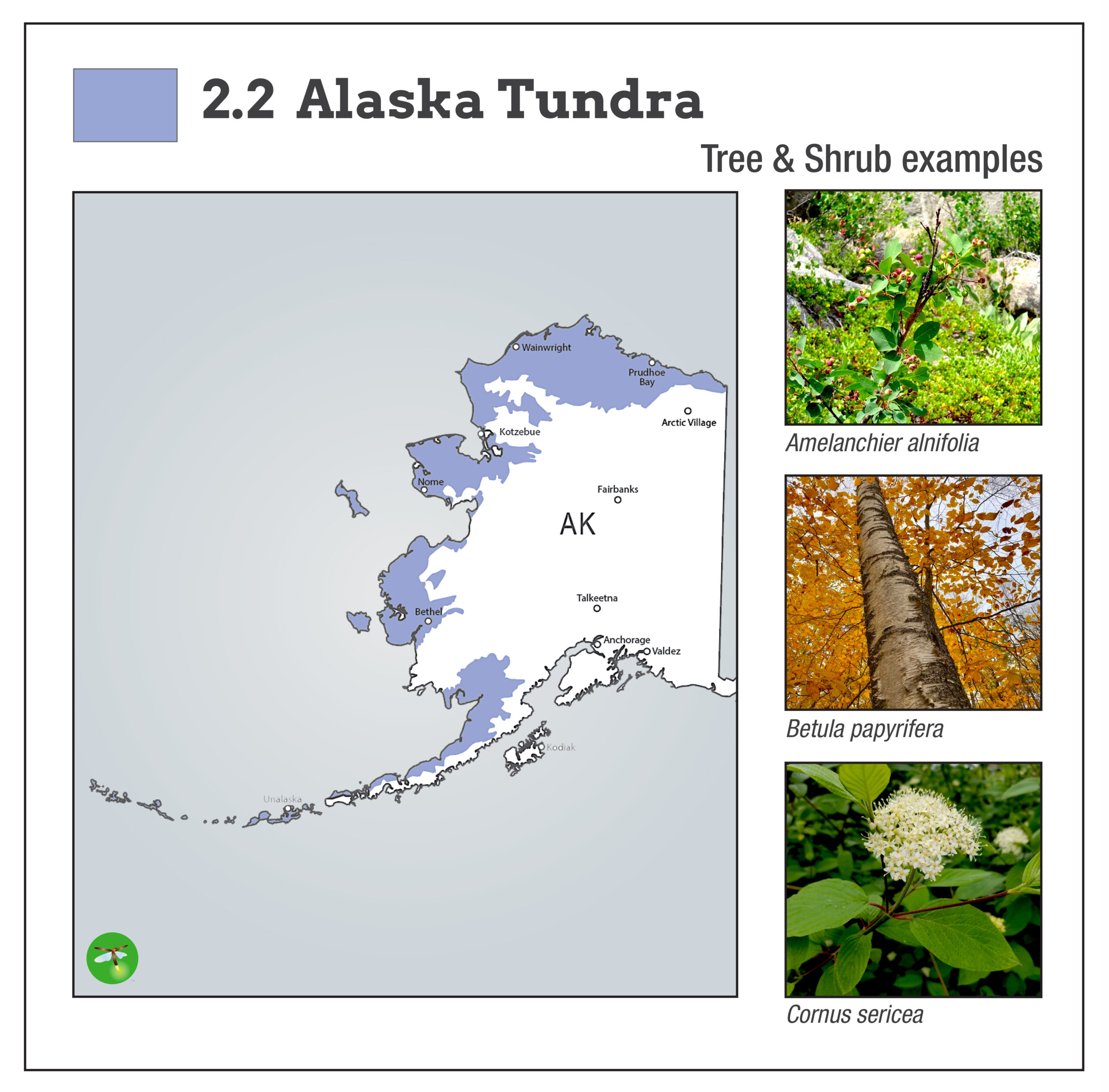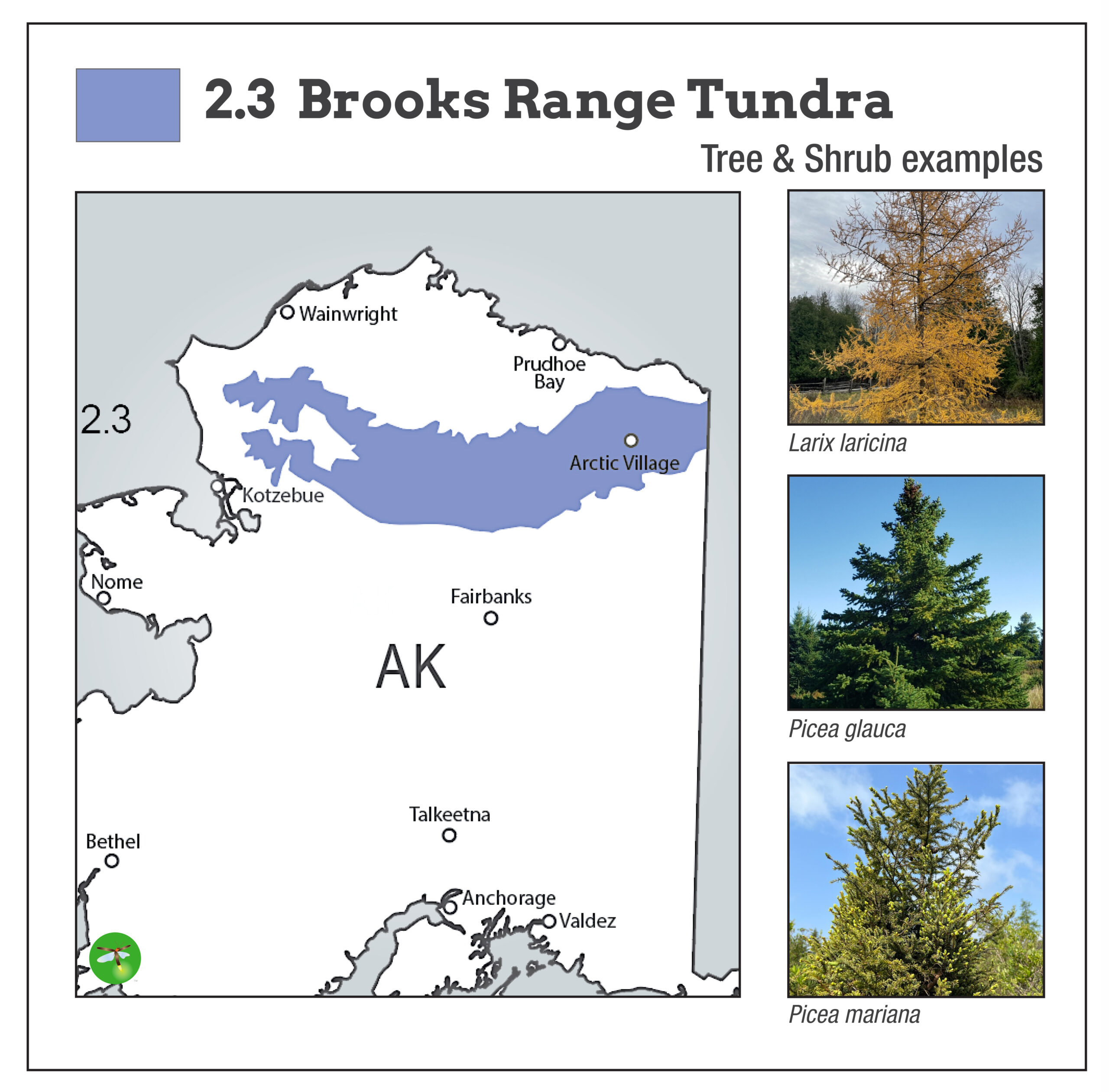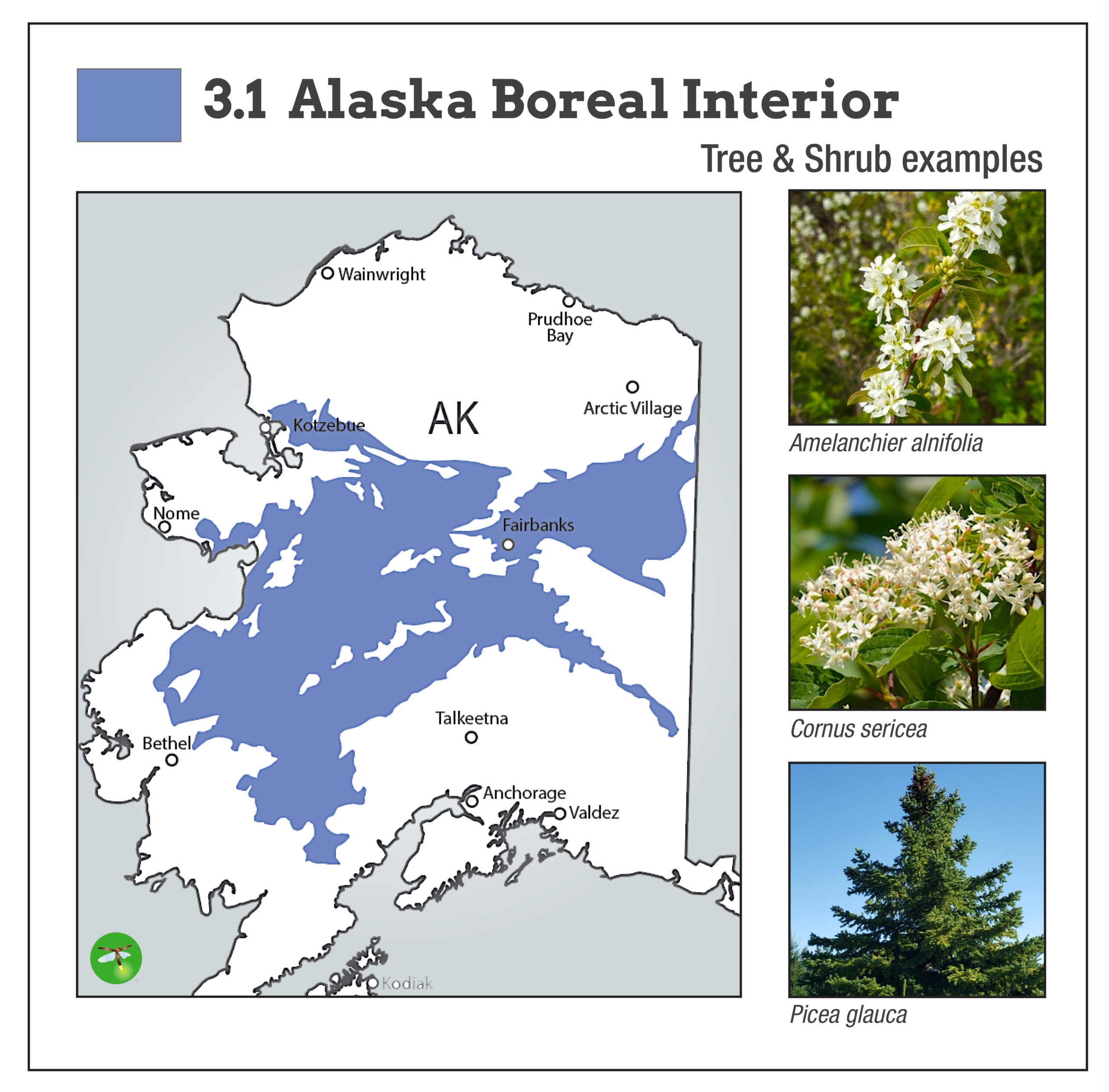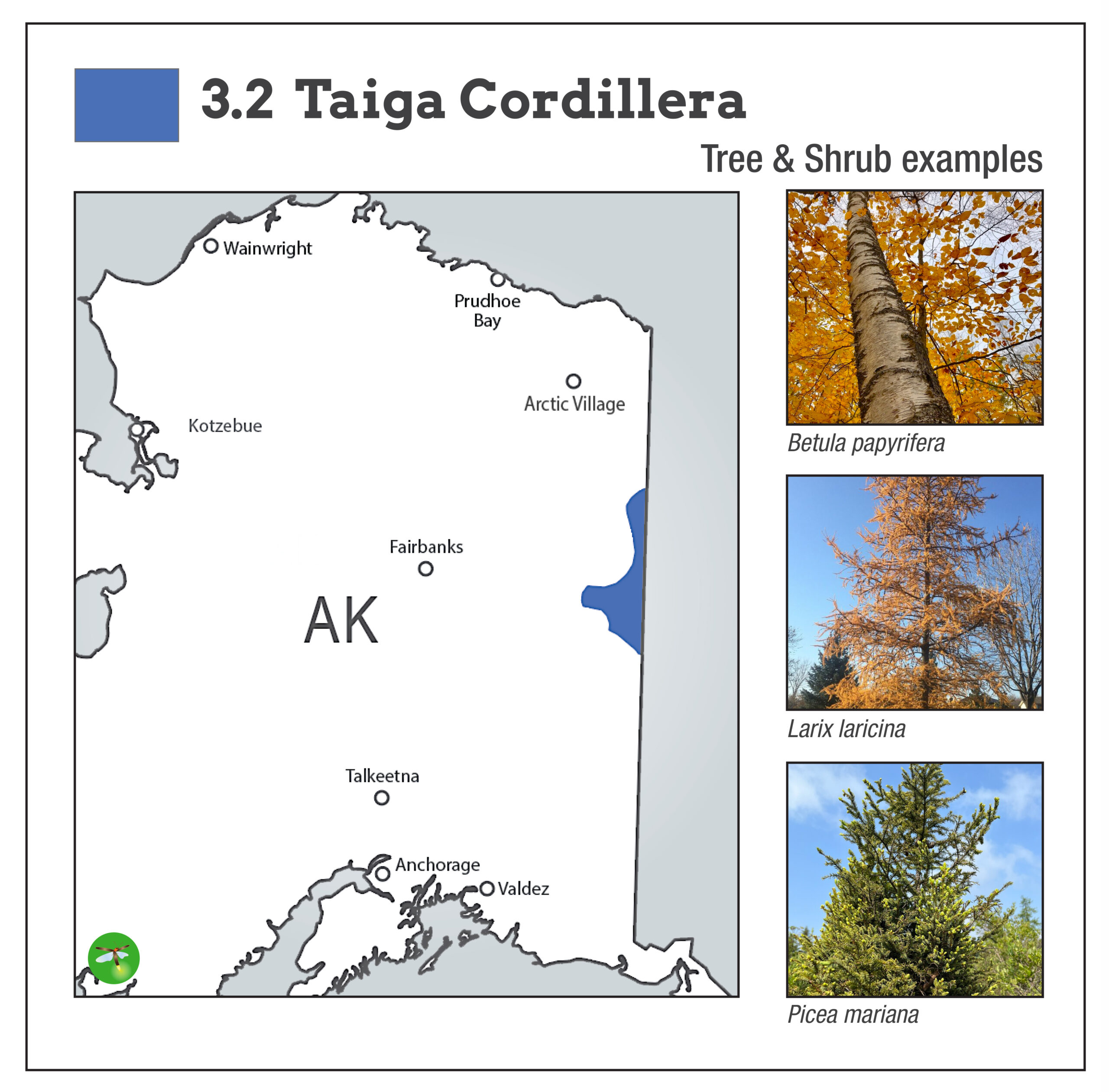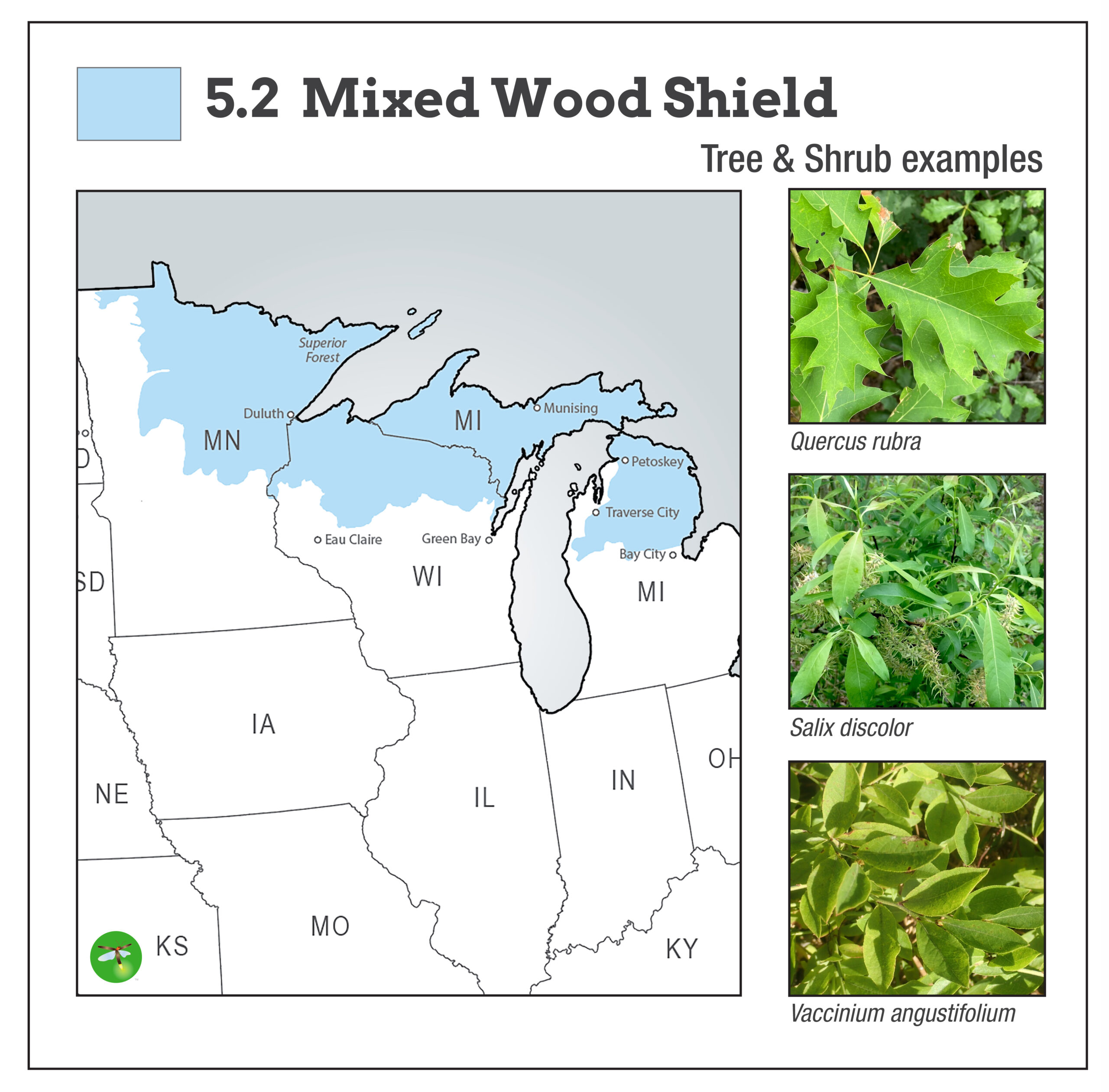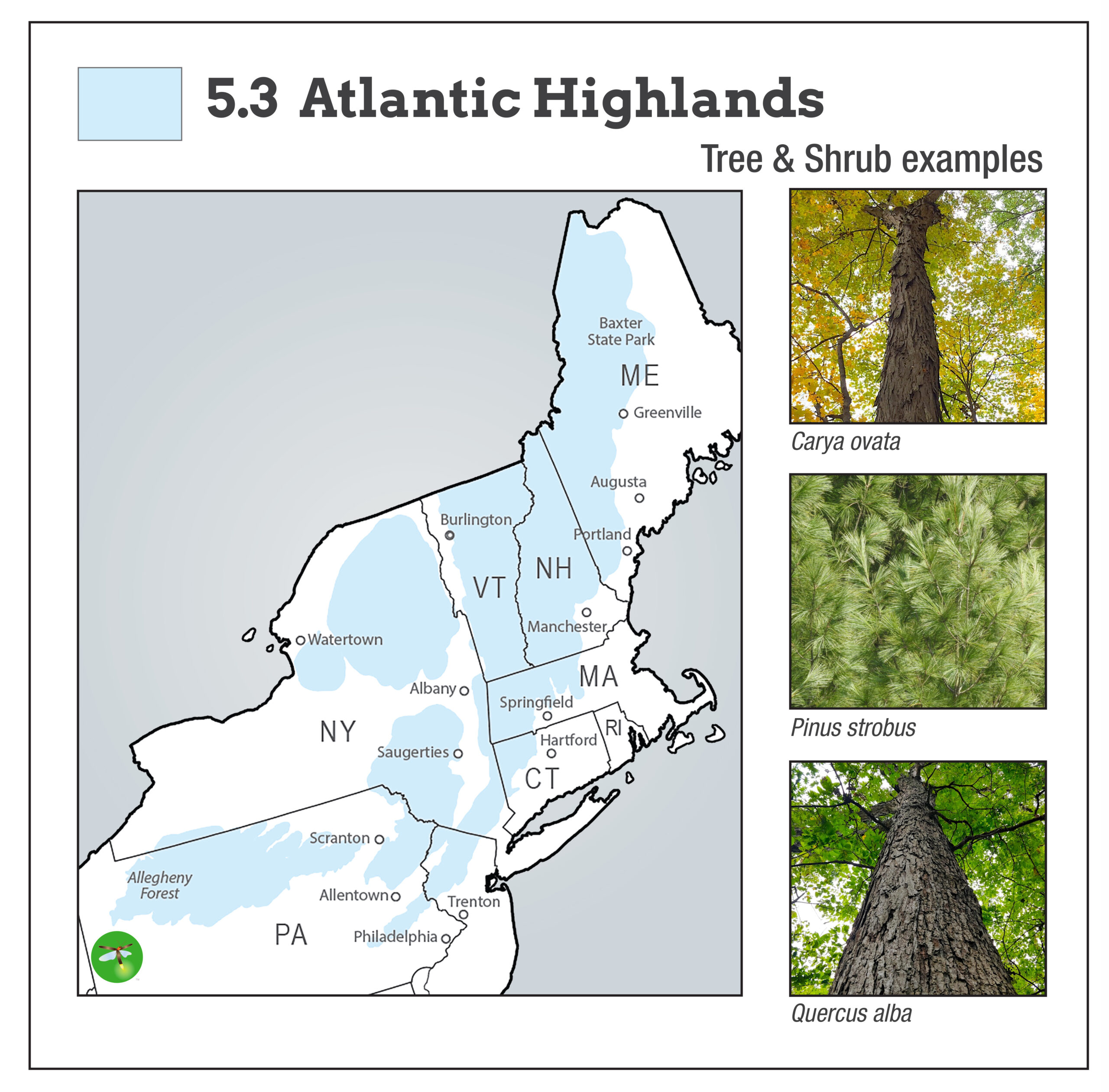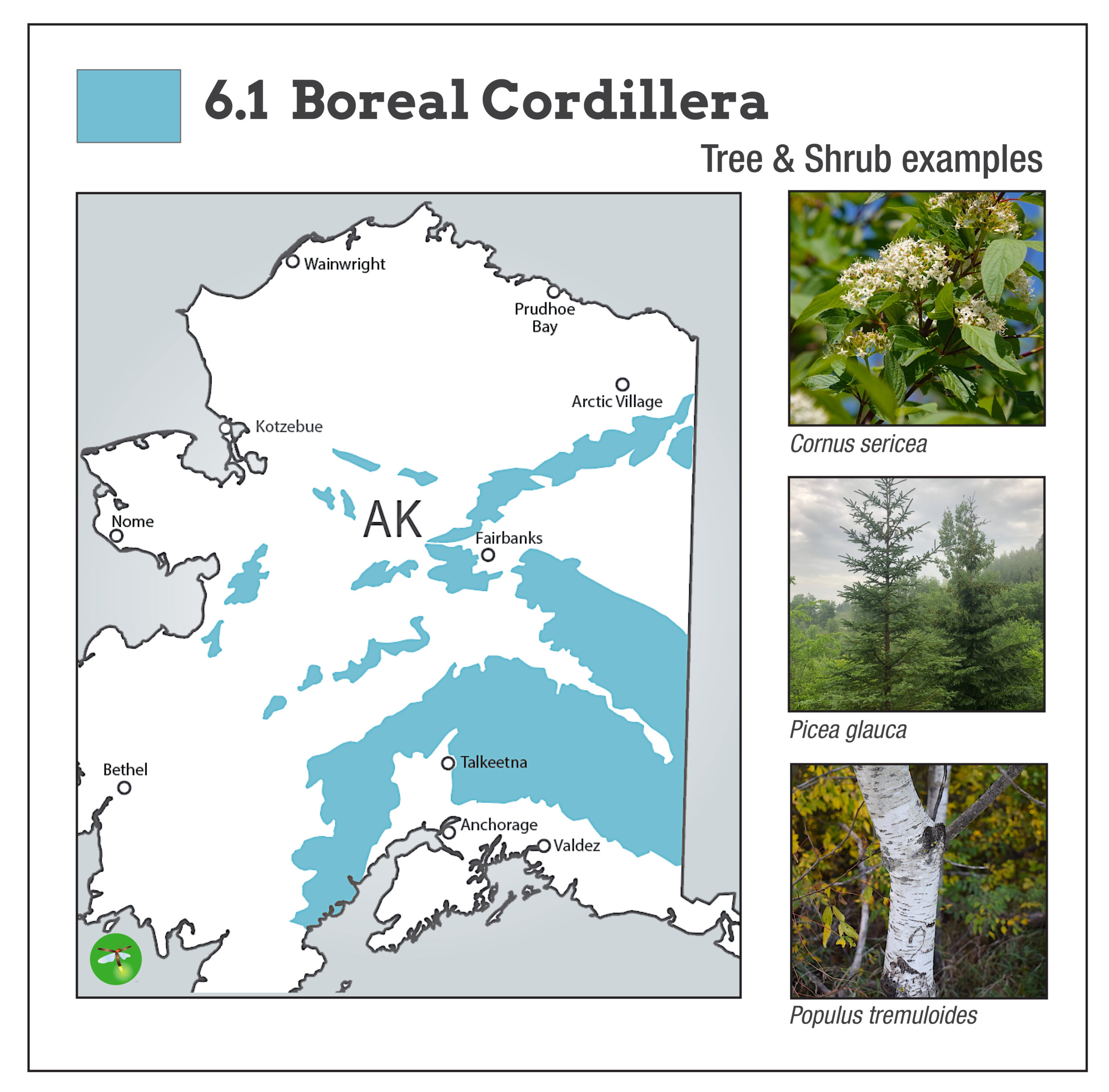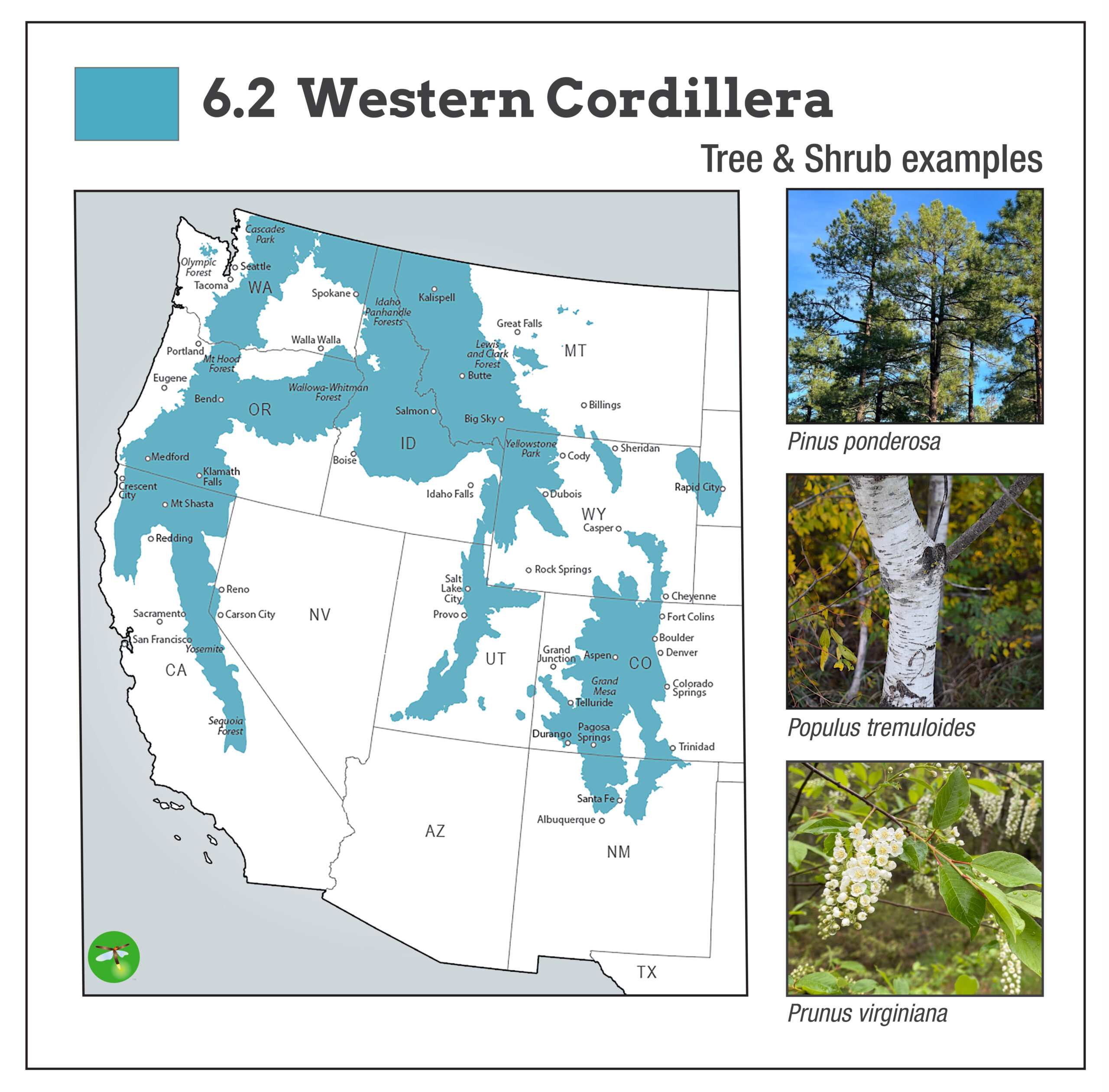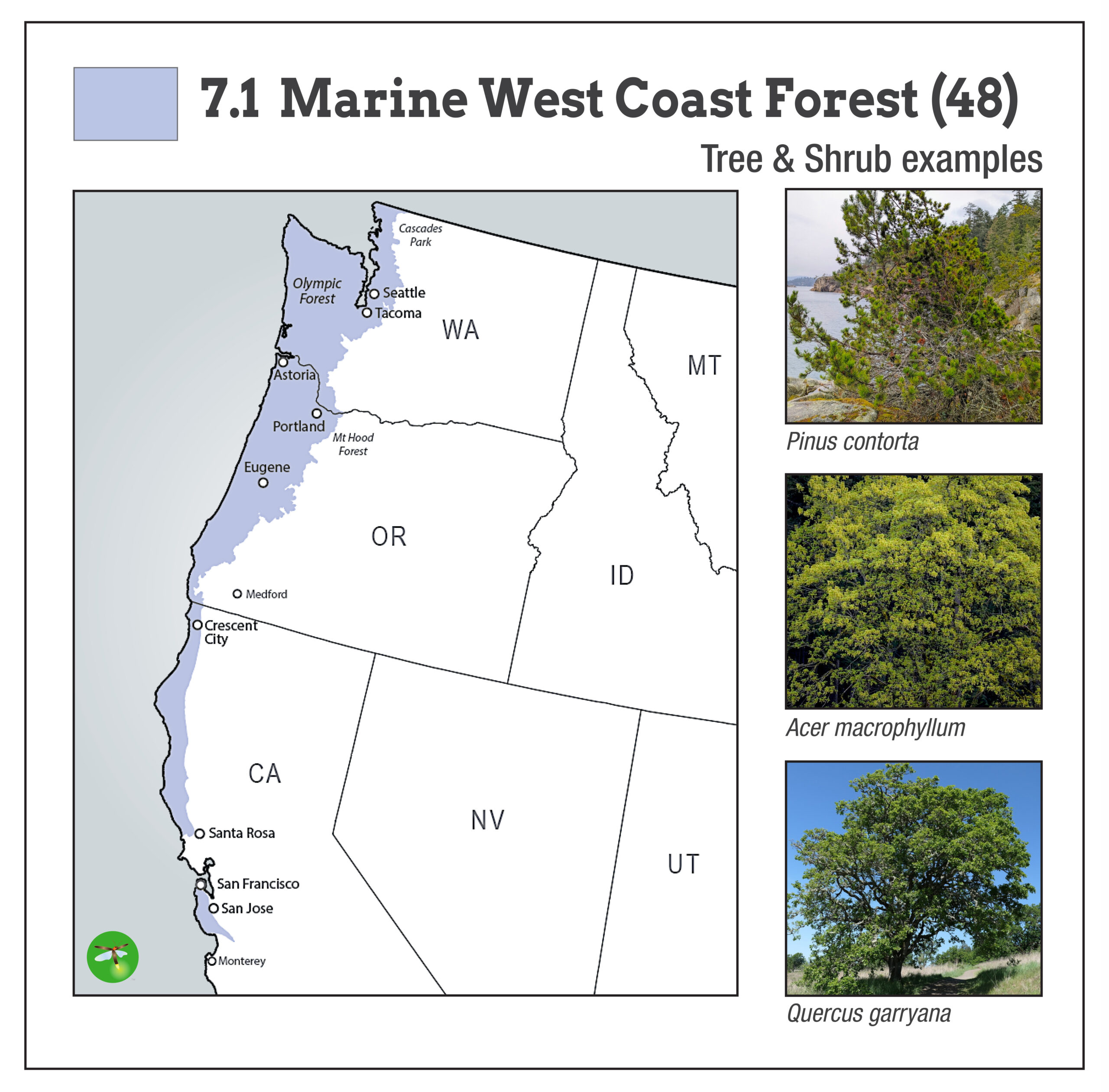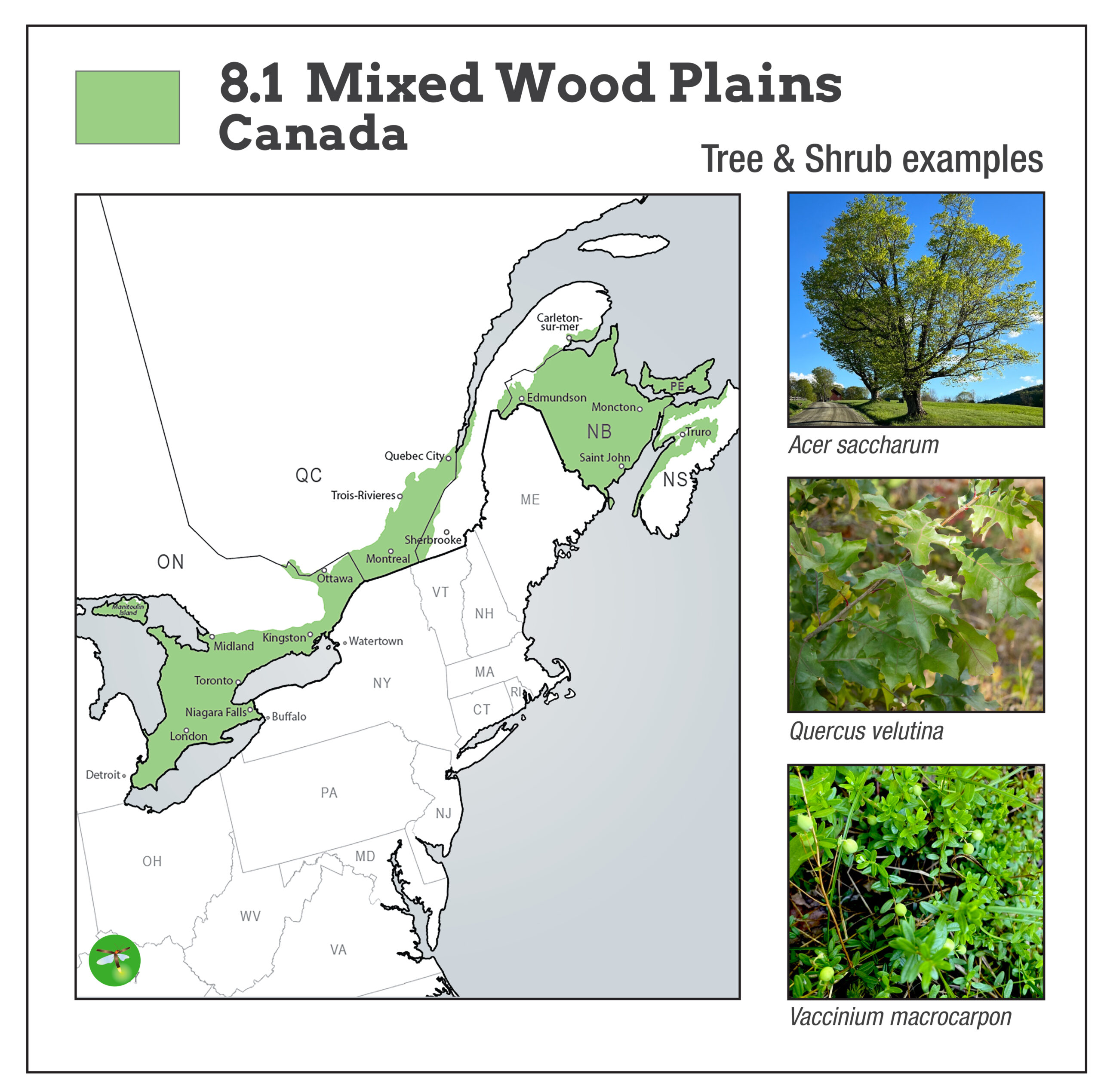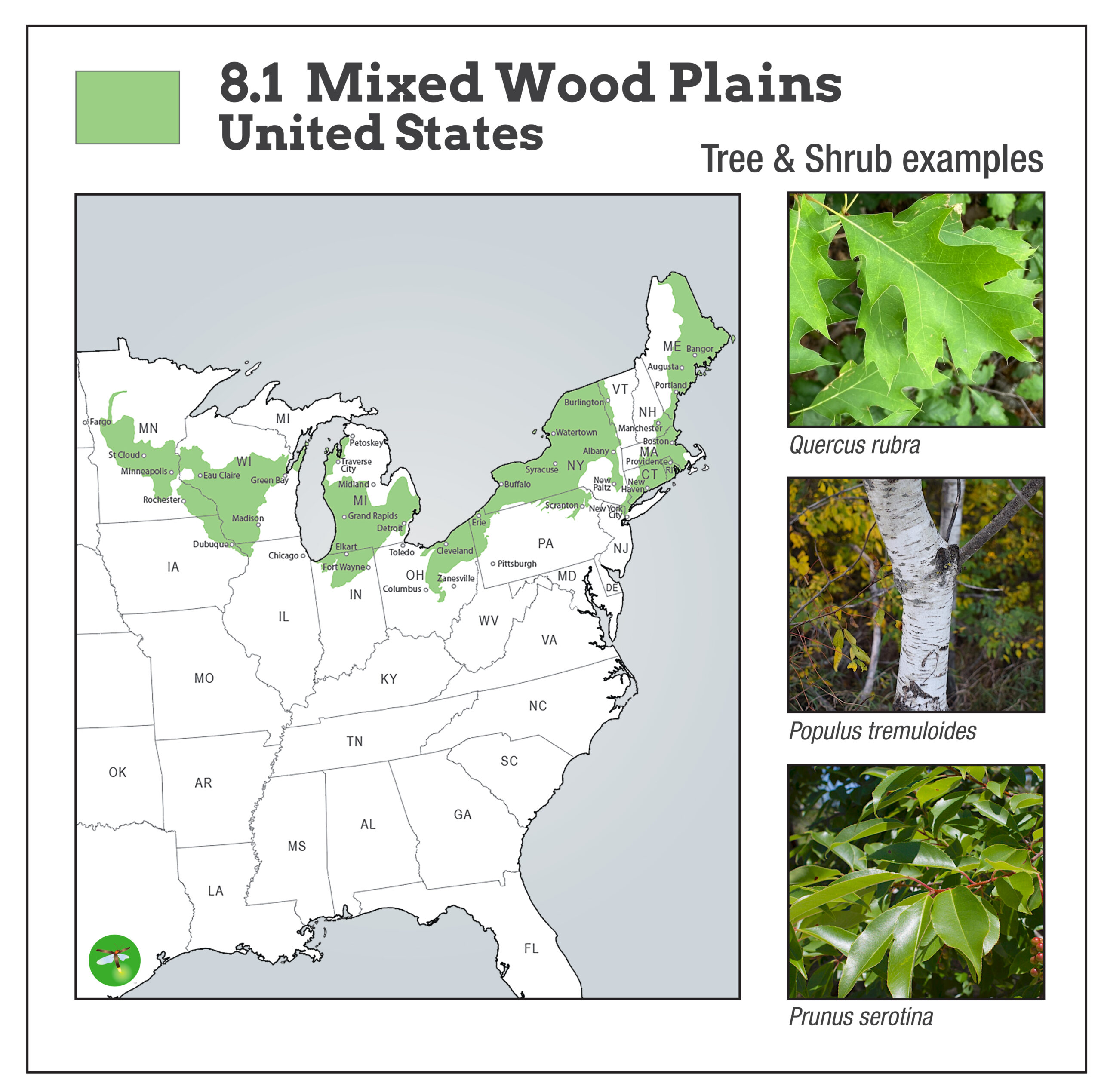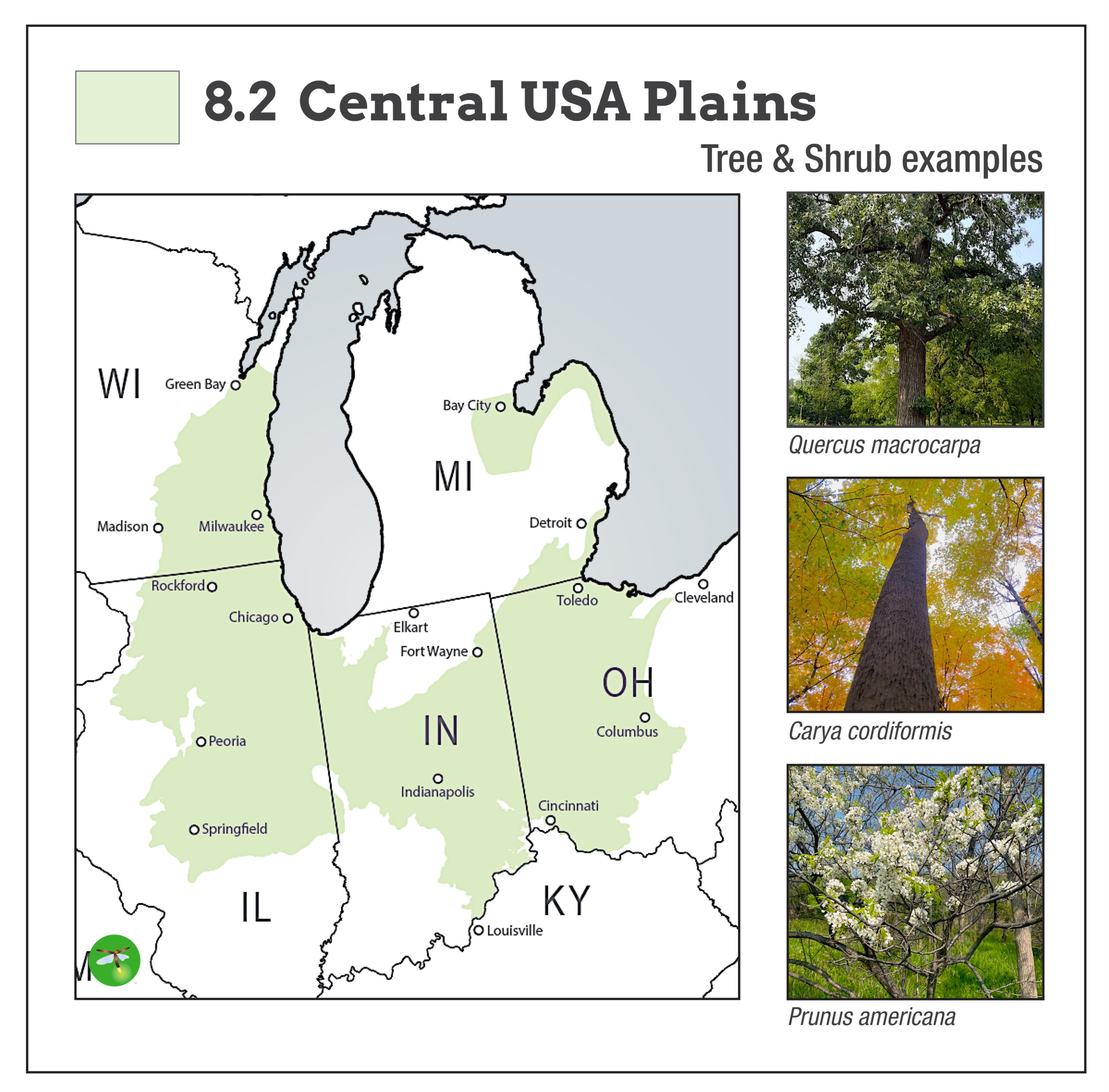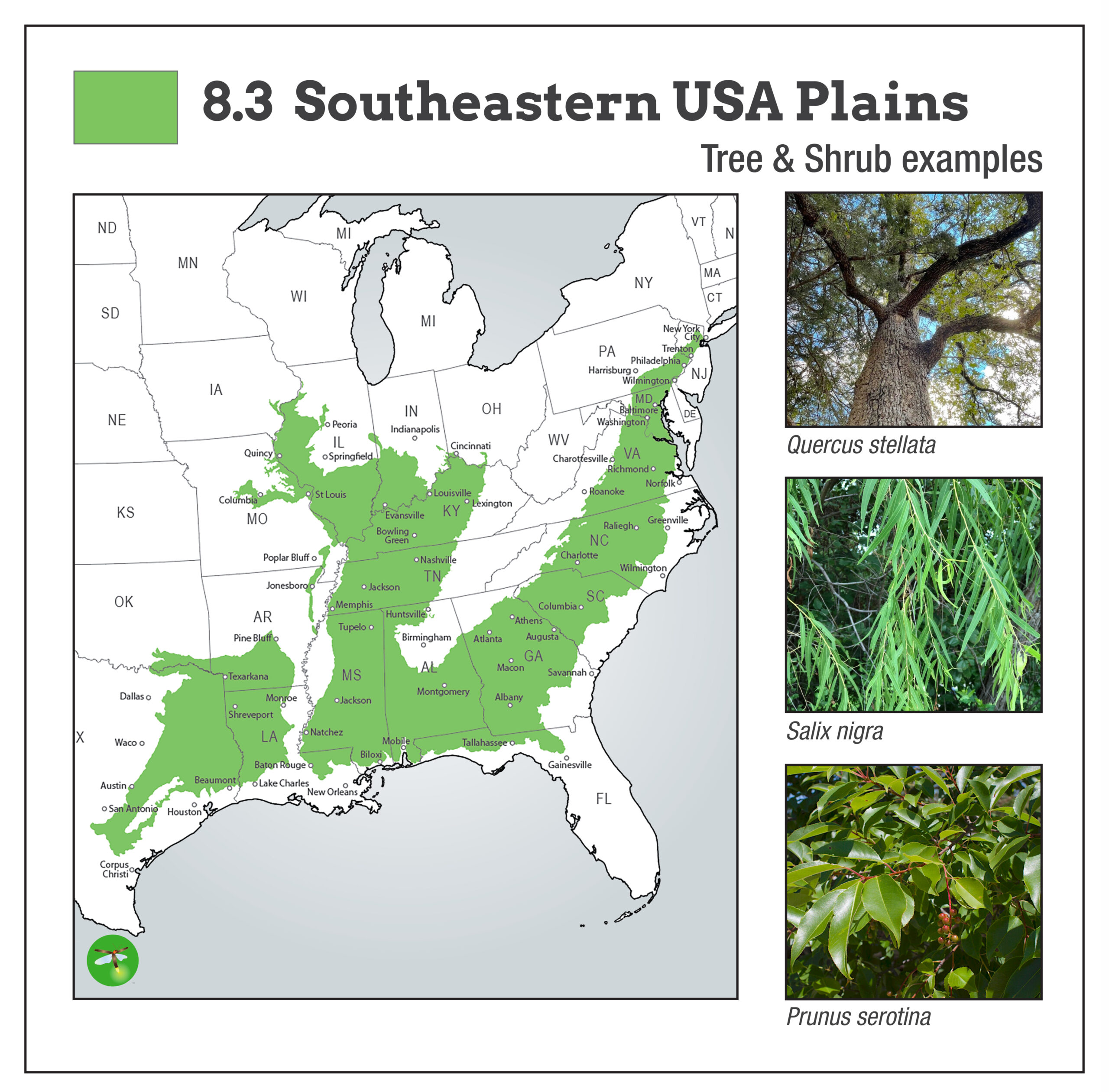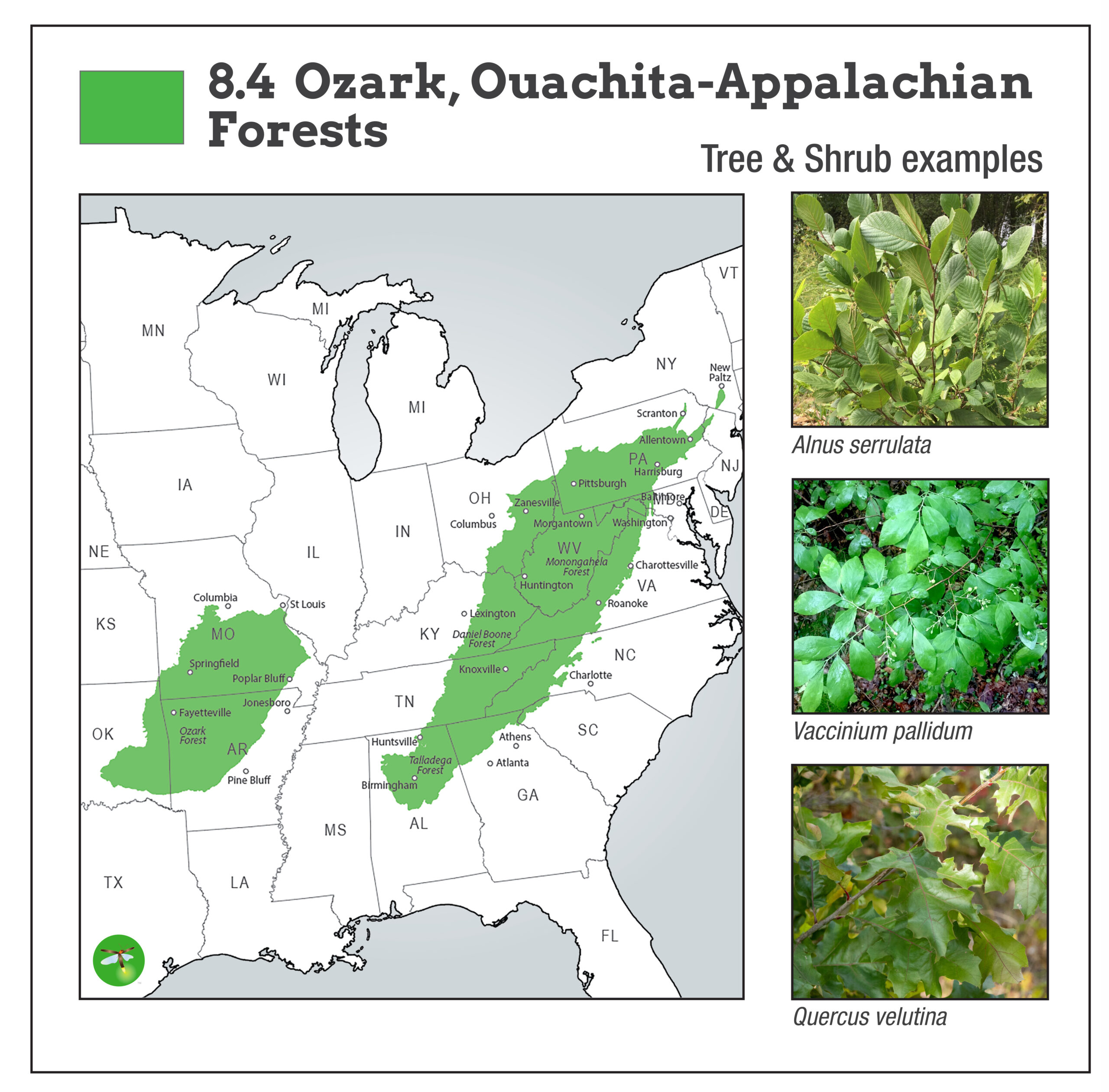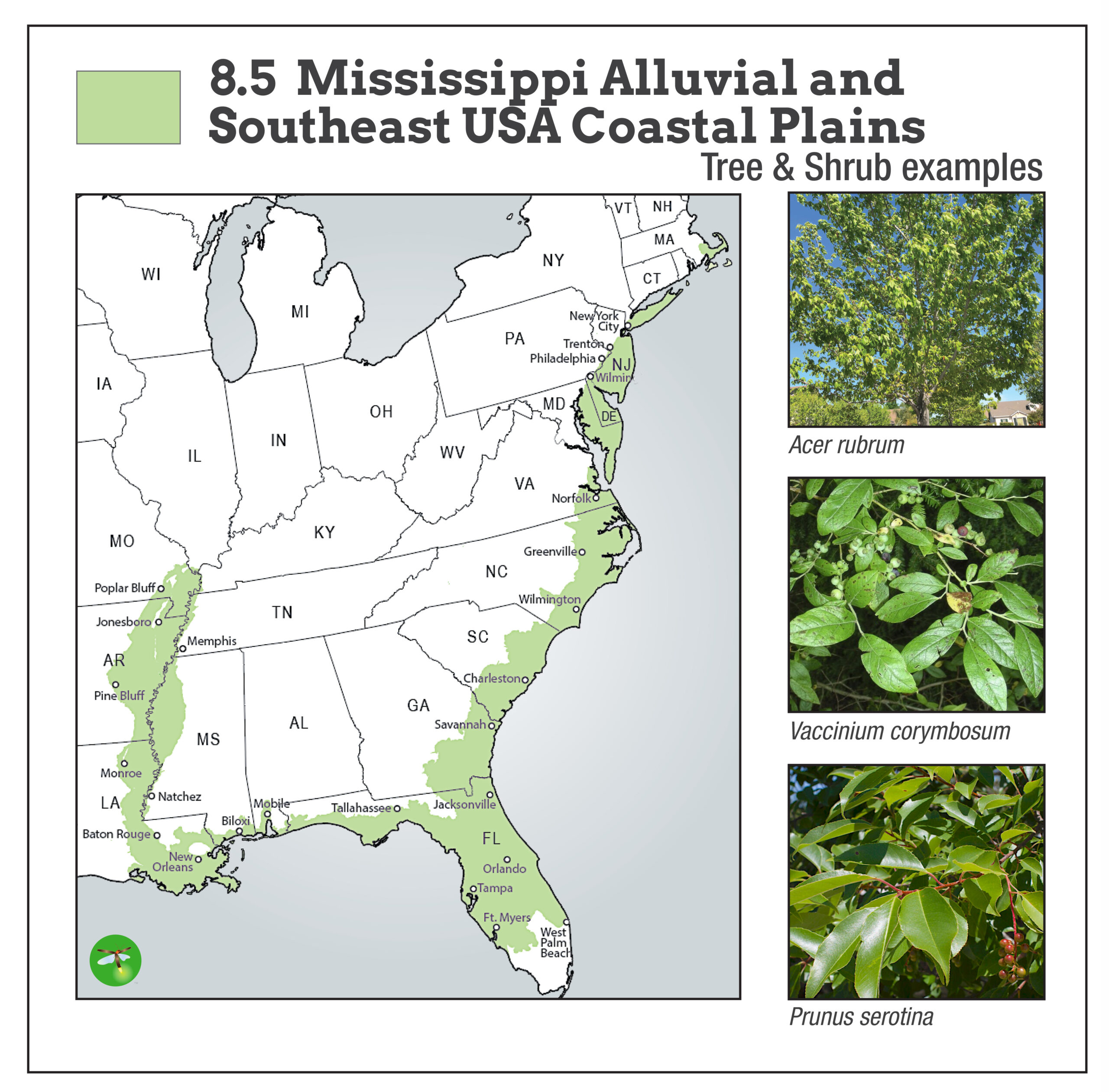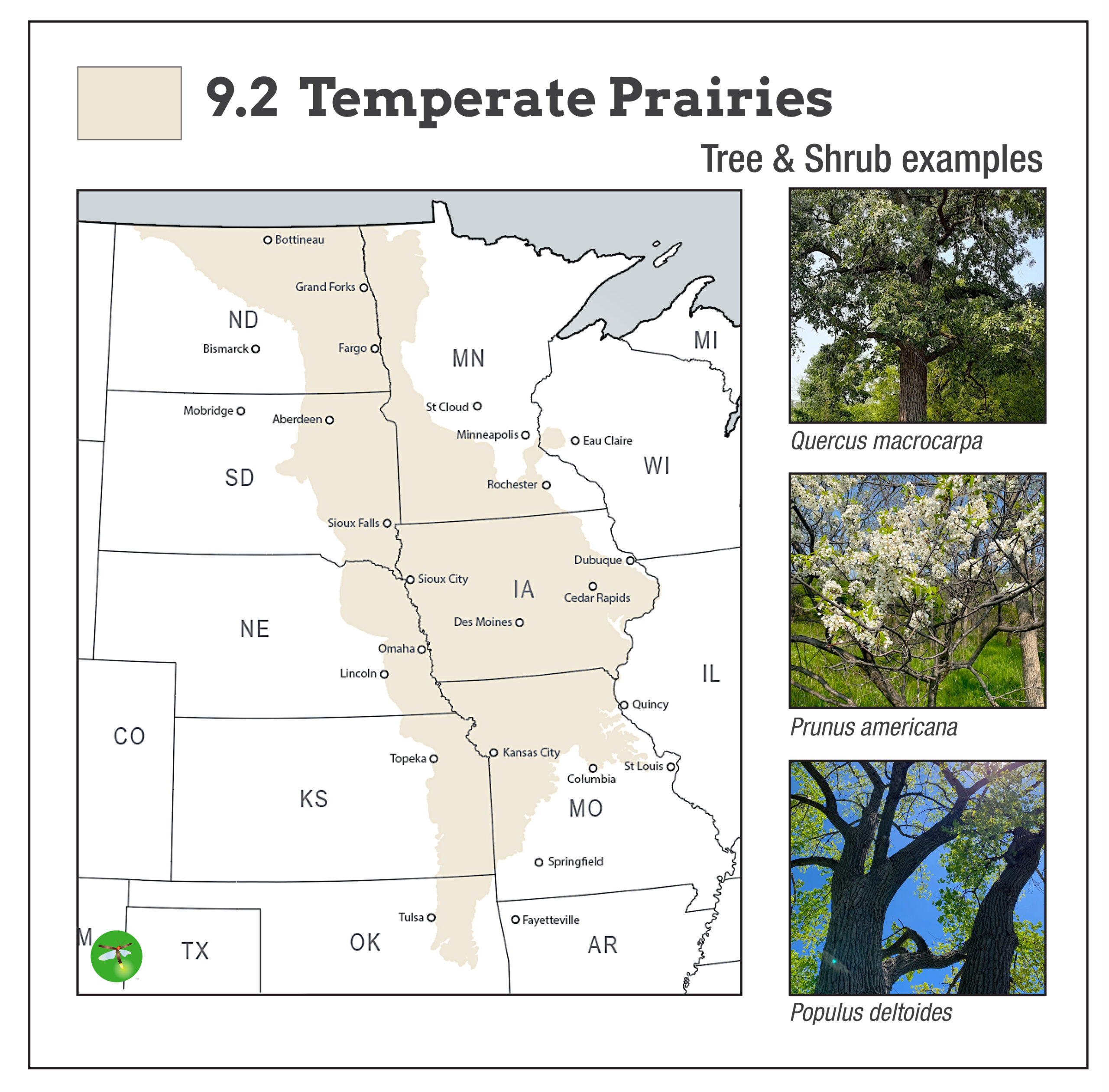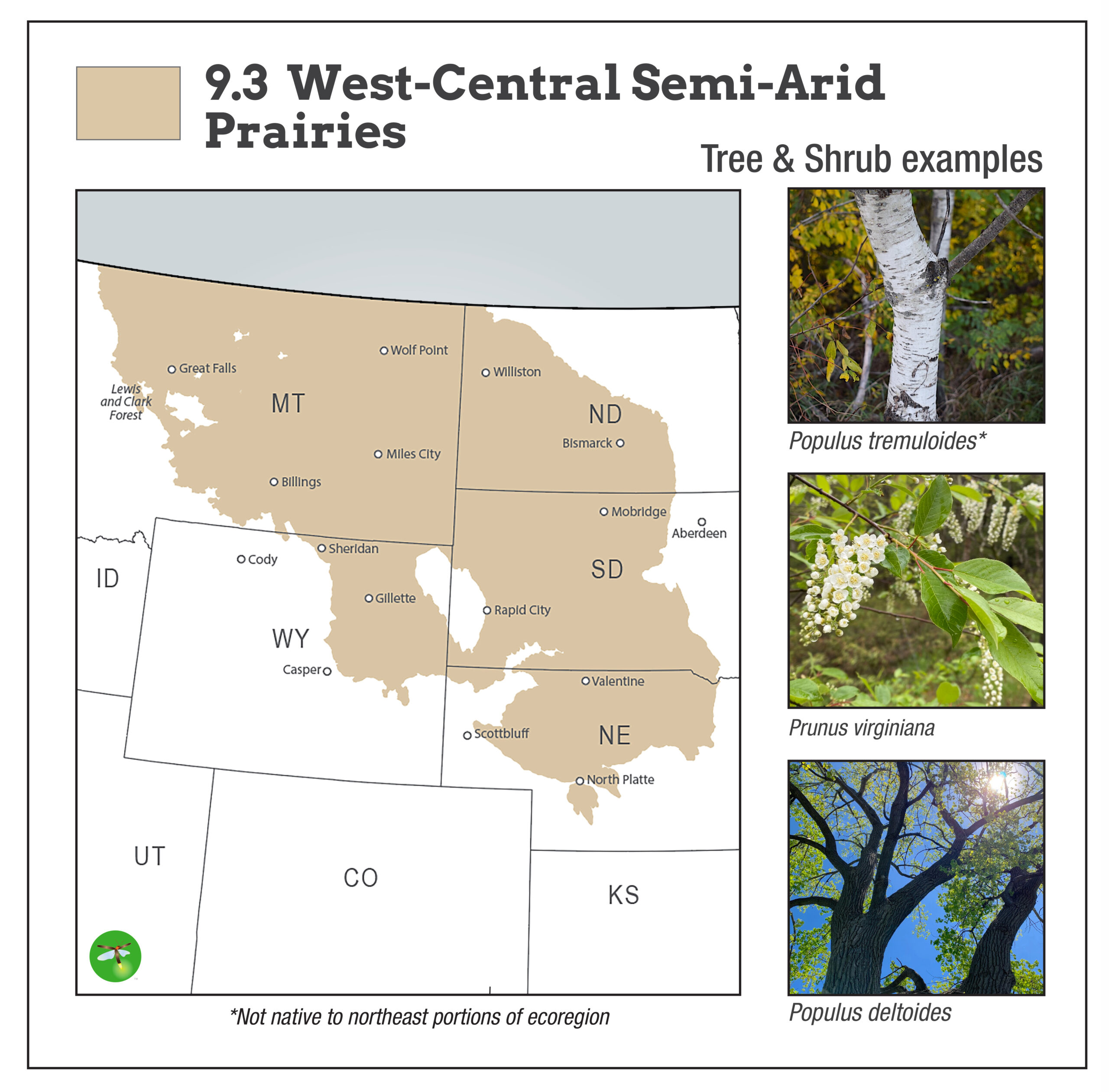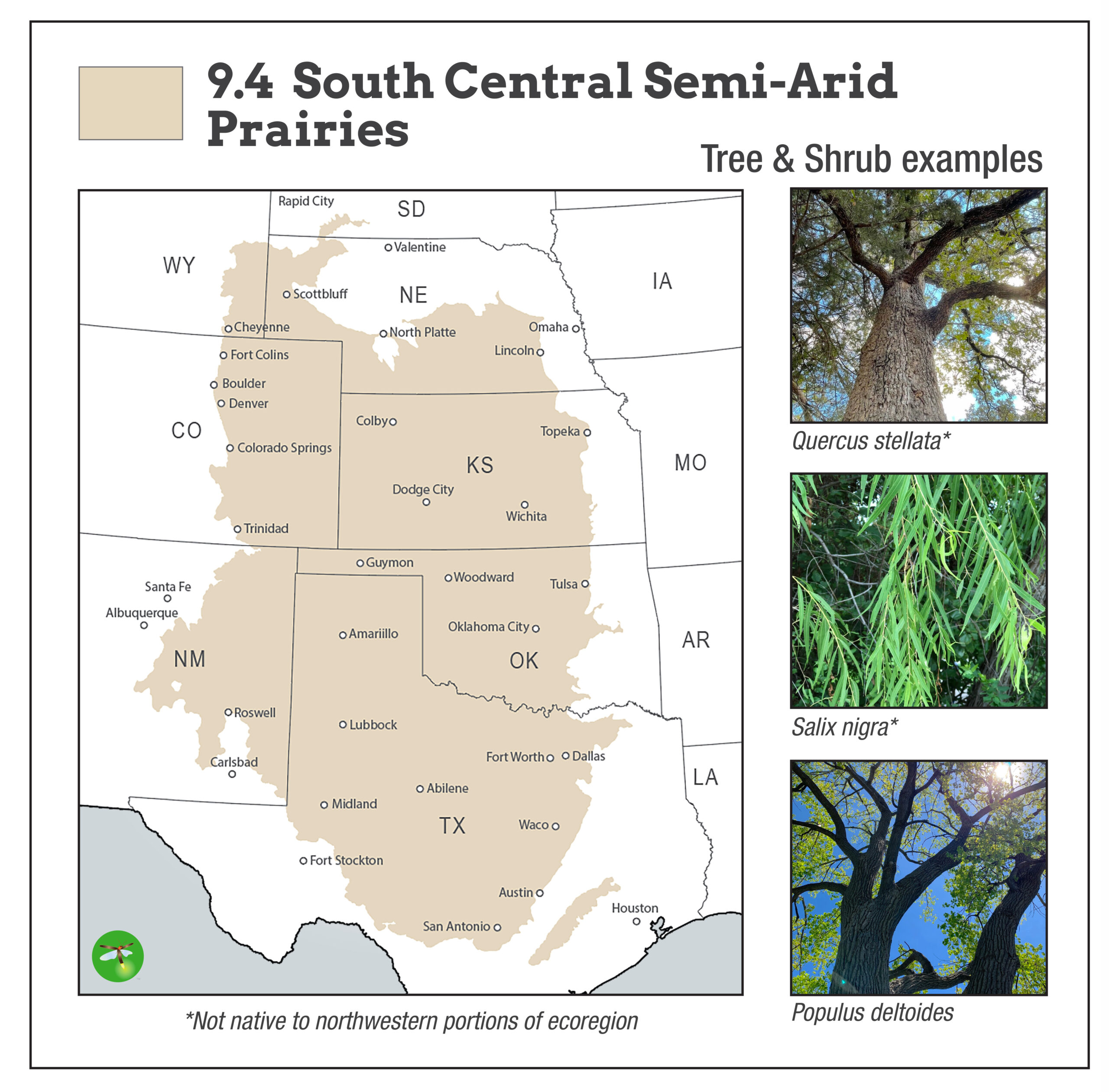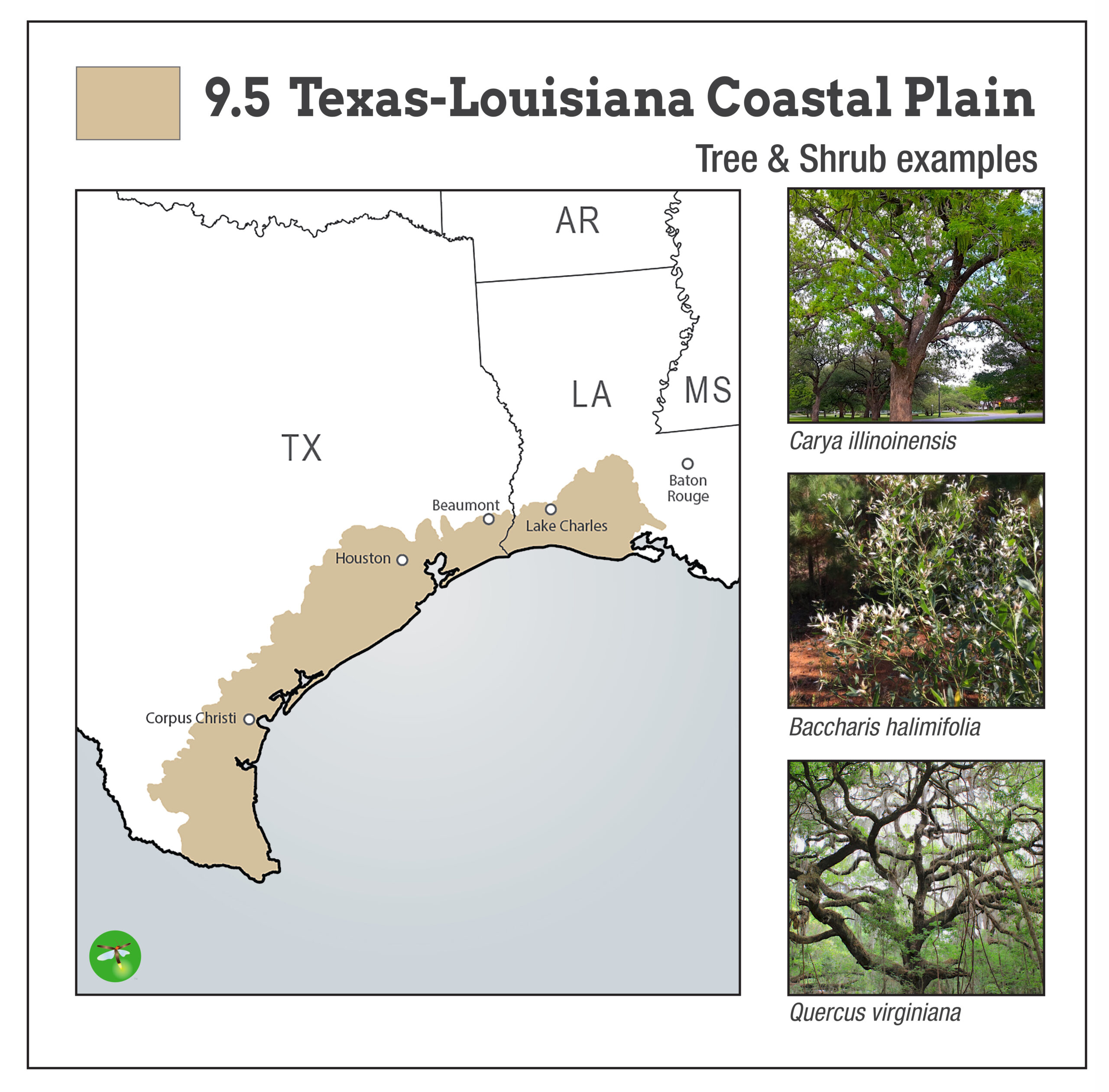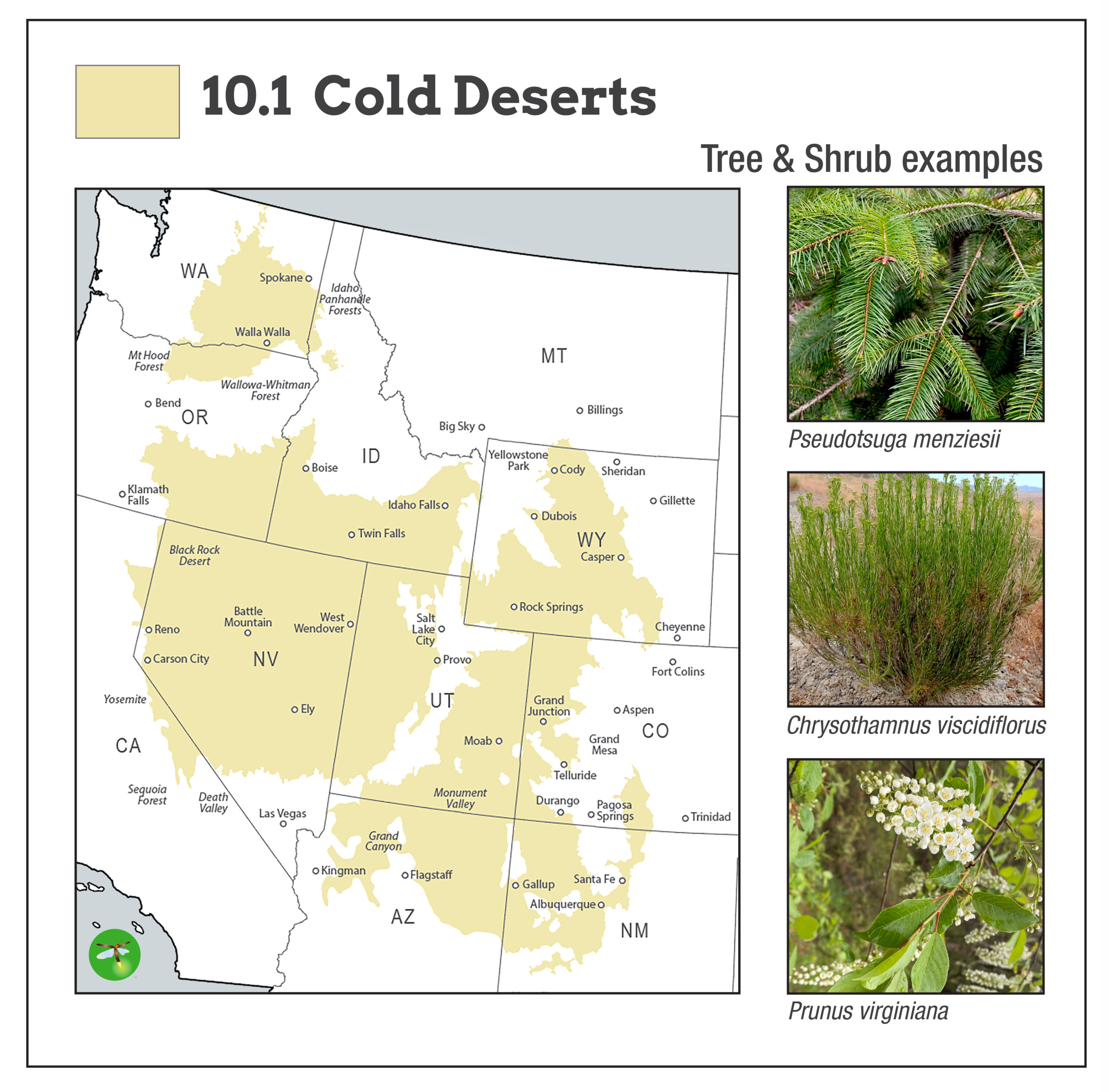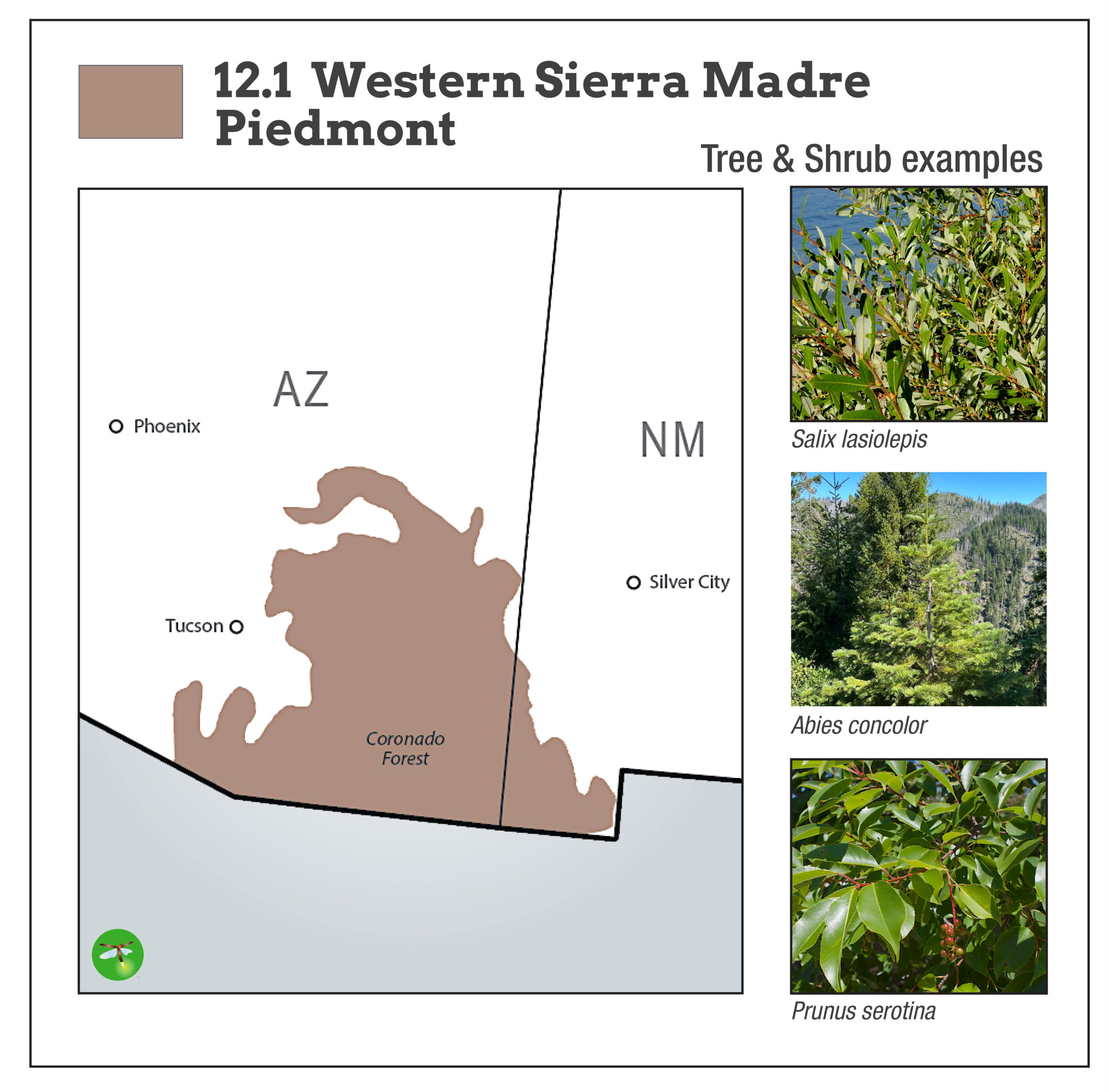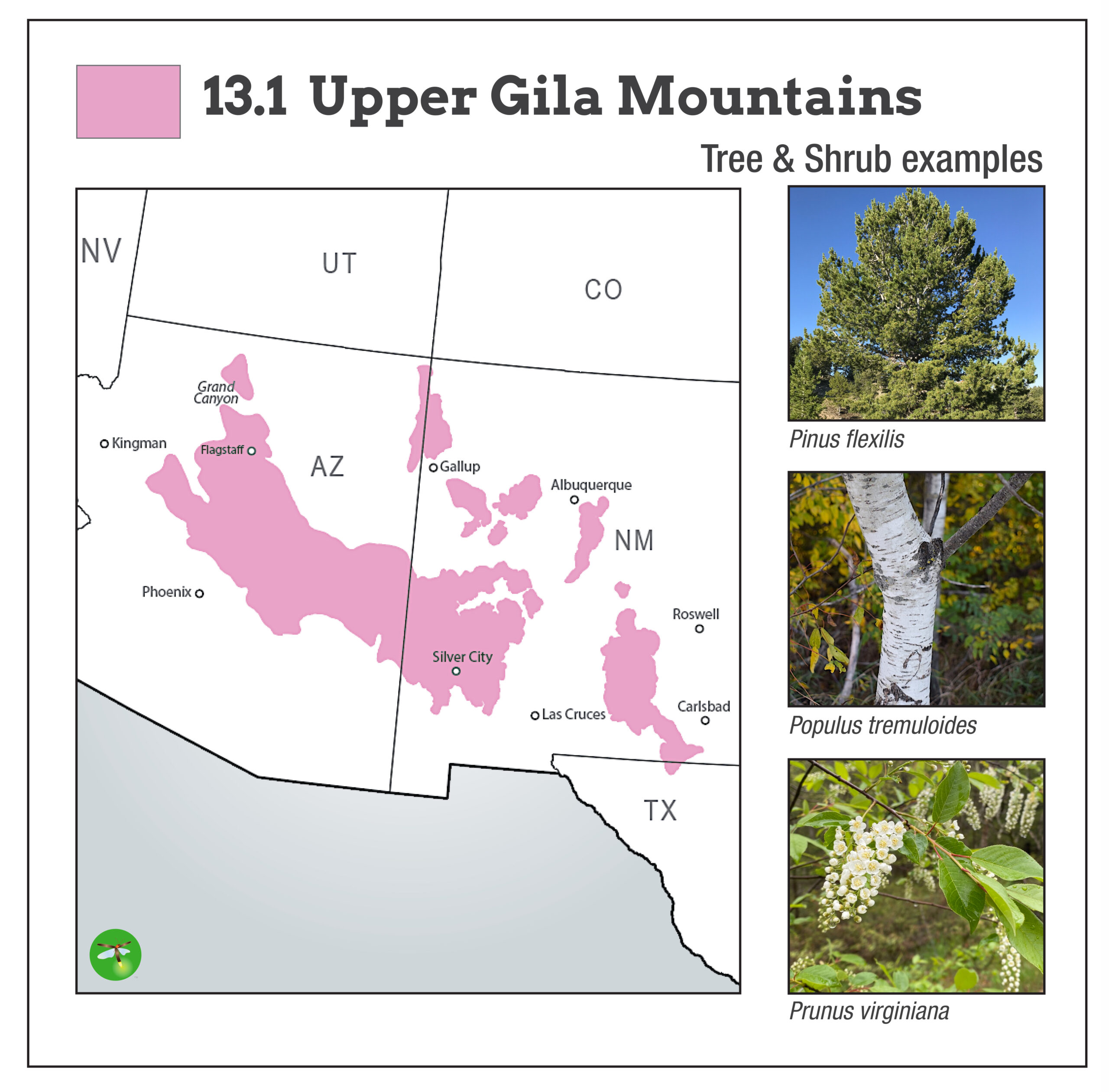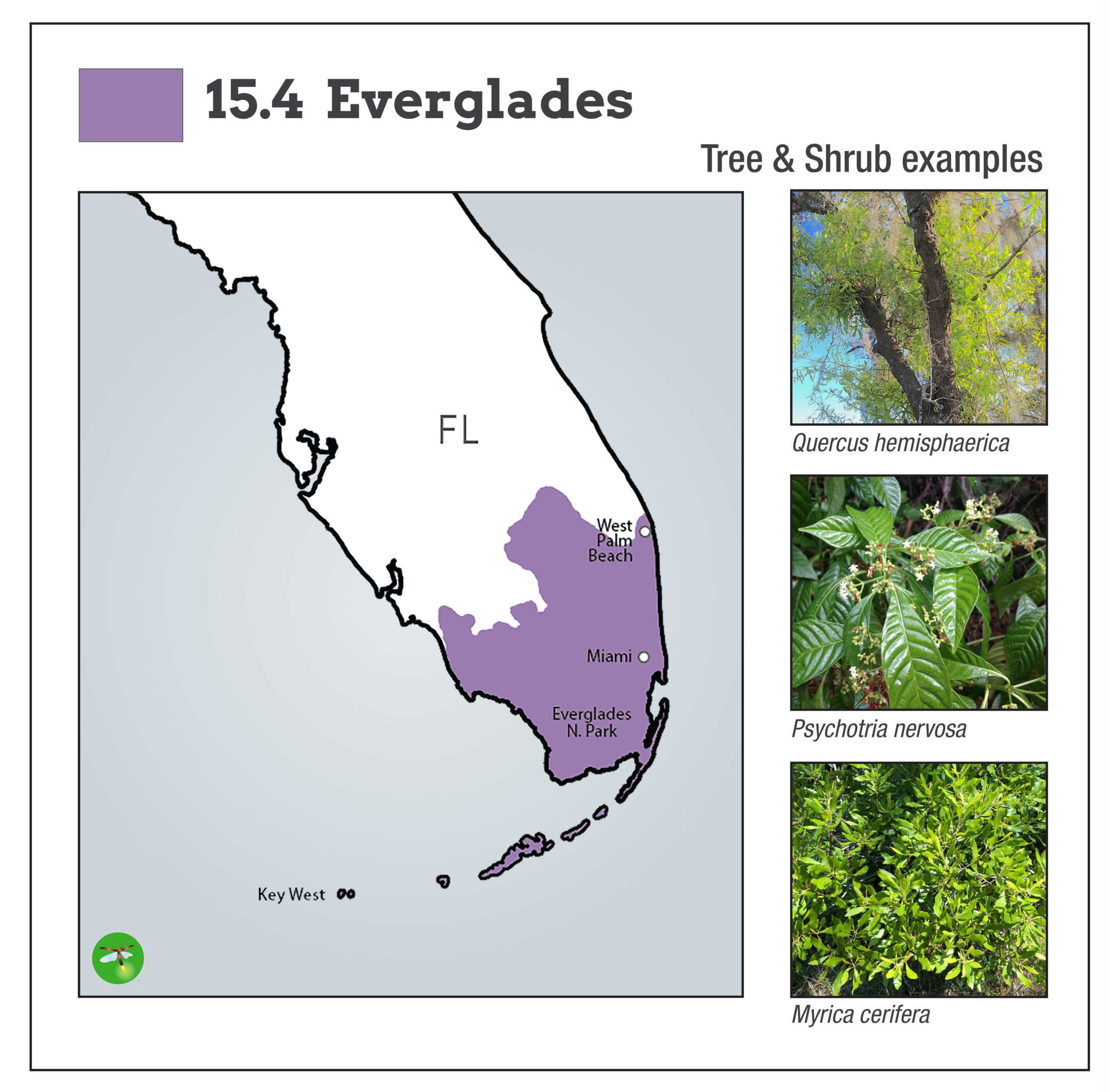KEYSTONE TREES AND SHRUBS
Simply put, Keystone Plants are the most productive plants that support the most species! Doug’s research at the University of Delaware has shown that a few genera of native plants, or keystone genera, form the backbone of local ecosystems, particularly in terms of producing the food that fuels insects. By planting just one of these keystone plants you can help restore native biodiversity! Landscapes that do not contain one or more species of keystone genera will have failed food webs, even if the diversity of other plants is high.
We use ecoregions to make it easy to identify the native plants that will work best for your location’s growing conditions and climate. This is a different approach from using a state’s native plant listing. An ecoregion is an area that shares common ecosystem characteristics such as weather, seasons, wildlife, soil, etc. Since states will often have vastly different habitat types and species from one side to the other, ecoregions are particularly useful for geographically grouping native keystone plants. You can find your ecoregion color-coded on the map below. In some cases the plants for your ecoregion may not line up with your State’s listing of native plants but will perform as a keystone plant. If however you prefer to plant by your state’s native plant listing, please refer to the NATIVE PLANTS FINDER.
Trees and shrubs can live for decades or even centuries, so selecting the right location to plant is important. Consider its mature size and any potential interference with structures or other plants. When planting, ensure the root ball is level with the surrounding soil. Also consider amending the soil with organic matter like compost. Water the plant right after planting, and continue to water throughout the first year as the roots establish. After the plant establishes, this should no longer be necessary. Deciduous trees and shrubs will drop their leaves in the fall. Instead of removing the leaves, rake them neatly under the canopy to preserve insects and nutrients on your property. Also consider planting soft landings of native plants underneath your trees to provide habitat and sustenance for any insects that complete their lifecycle on the ground. Please remember to log your plants on the HNP Biodiversity MAP. Every square foot counts!
We carefully select the native plants on these lists based on being keystone species (the most productive), with a broad range across an ecoregion, and wide commercial availability.
Find Your Ecoregion Guide Below
1. Search your address -or- zoom to your location
2. Click the map to learn your Ecoregion (make sure to zoom to Level II Ecoregion)
3. Scroll to find the corresponding guide
Select an ecoregion from the legend below:
Cartography by KickMap, LLC using ESRI's ArcMap v10.3. Data used were modified EPA Ecoregion Level II.
U.S. Environmental Protection Agency (2001). NA_Eco_Level2. vector digital data. U.S. EPA Office of Research & Development (ORD) - National Health and Environmental Effects Research Laboratory (NHEERL).

